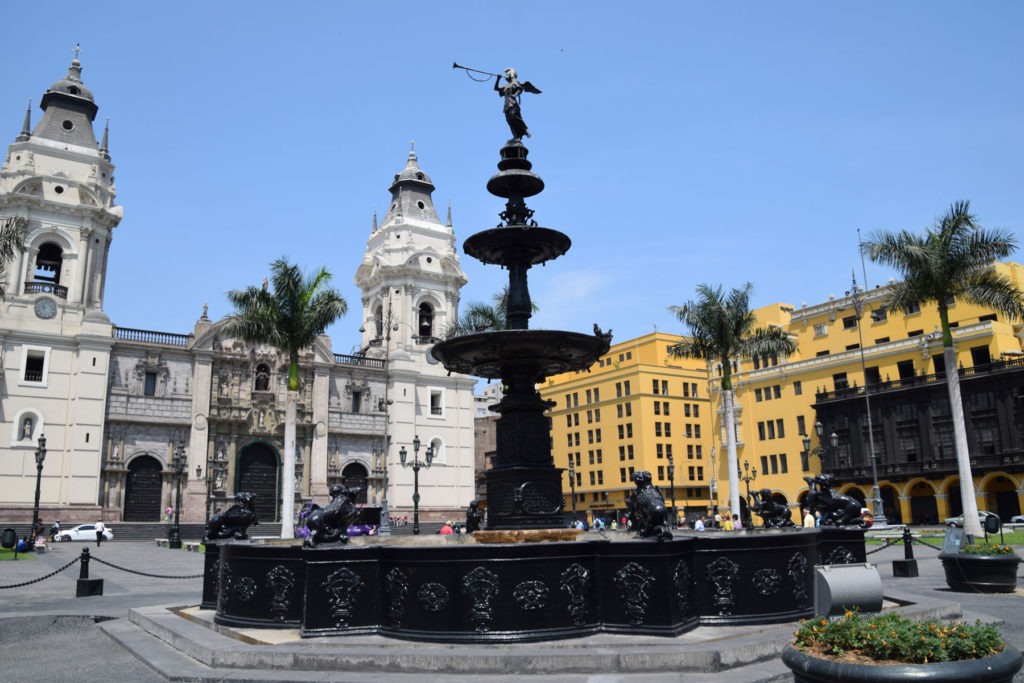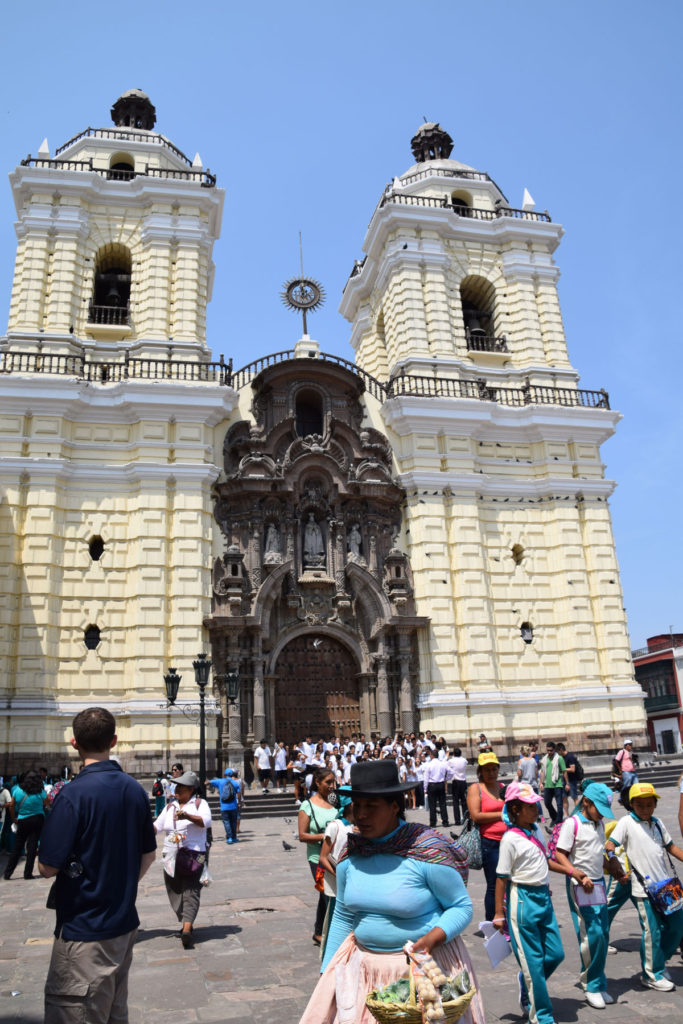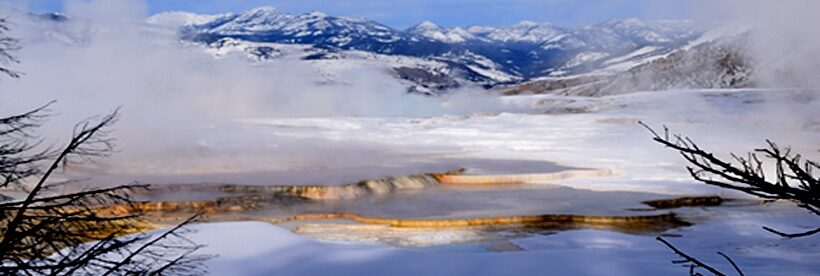Lima, Peru is fast becoming a preeminent food hotspot with traditional Peruvian foods and various fusion cuisines that I found extremely delicious. And of course it is also internationally known for extraordinarily magnificent museums such as the Museo Larco with its collection of pre-Columbian art.
Lima, the capital city of Peru, has a population of almost 10 million people that is dispersed among its 43 districts. Known as the “City of Kings”, Lima was founded by the Spanish conqueror Francisco Pizarro in January 1535 when Pizarro confiscated land on the south bank of the Rimac River where the Inca curaca (local ruler), Taulichusco, had his palace. Lima then became the most important city and capital of the Spanish holdings in South America until the mid 1700’s. Lima’s supremacy later diminished as northern South America became a part of the Spanish Empire (known as the Viceroyalty of New Granada and established in 1717) and with the creation in 1777 of the Viceroyalty of La Plata, which encompassed the present-day territories of Argentina, Bolivia, Paraguay.
Historic Centre of Lima
The Historic Centre of Lima was declared a UNESCO World Heritage site in 1988. As noted in UNESCO’s description of this site:
“The authenticity of the Historic Centre of Lima is intact as it largely preserves the original features of its urban foundation design, as a checkerboard, and the expansion area from the XVI to the XIX century, including old pre-Hispanic paths heading North (Chinchaysuyo) and East (Antisuyo).”

The Plaza de Armas is near the center of the Historic District and thought of as the birthplace of the city. There is no original building remaining adjacent to the plaza, but the bronze fountain in the Plaza’s center was erected in 1650. Some of the more significant buildings now surrounding the Plaza include the Cathedral of Lima, the Government Palace, and the Archbishop’s Palace of Lima.
The construction for the first church on the Cathedral of Lima site was completed in 1538. The present cathedral is the result of many renovations and rebuildings and is largely based on the original plans of the Cathedral that was devastated in 1746.
The Government Palace houses the official residence of Peru’s President and executive branch. The palace’s original construction began in 1535 over the residence of Taulichusco, the then Inca curaca. Similar to the Lima Cathedral, the Government Palace has been extensively rebuilt over the years.
The Archbishop’s Palace is sited on land that Pizarro designated for the head priest of Lima’s residence shortly after the city’s foundation in 1535. The present Archbishop’s Palace was built in 1924 and is well known for its ornate Moorish-style balconies.

Two of the other places that I visited – and I think are well worth going to – in the Historic Centre are the San Francisco Monastery and the Plaza San Martin. The San Francisco Monastery (Convento de San Francisco) is one block northeast from the Plaza de Armas. The Monastery was consecrated in 1673 and completed in 1774, although it has been extensively repeatedly rebuilt. Of note are its famous catacombs where a series of underground burial vaults were used until the mid 1800’s.

The Plaza San Martín is located about 5 blocks southwest of the Plaza de Armas. The Plaza was dedicated on July 27, 1921 to honor the 100th anniversary of Peru’s independence. An equestrian statue of José de San Martín is the Plaza’s central statue.
A video of Lima’s Historic Centre, done by UNESCO/NHK, gives a good overview of this area:
Lima Area Earthquakes – the Forces Behind the Rebuilding of the City
As noted several times in the text above regarding Lima’s Historic Centre, no wholly original buildings exist today, and those that do stand today have usually been repeatedly rebuilt. The continued destruction to Lima’s architecture is due primarily to several strong earthquakes in the Lima region that have occurred periodically.
The U.S. Geological Survey (Earthquake Hazards Program, Historic Earthquakes) sets up the geological framework for Peruvian earthquake activity as:
“Peru is located on the western edge of the South American crustal plate, one of several
large lithospheric plates that comprise the Earth’s crust and slowly move with respect to one another. The boundary between the South American plate and the Nazca plate to the west is one of the most seismically active areas of the world. The Nazca plate is being overridden and driven beneath the westward-moving South American plate. This collision between two large segments of the lithosphere is the source of most of Peru’s earthquakes. Offshore, where the two plates meet, the shocks occur at shallow depth. To the east, as the Nazca plate is pushed downward, the earthquakes occur at progressively greater depth – to as much as 600 kilometers near the Peru-Brazil border. … Shallow earthquakes are potentially more destructive than deep shocks of the same magnitude because they generate stronger surface waves.”
Although earthquakes are common in Peru, there have been several significant quakes in the Lima region since its founding. Much of the city was destroyed because of earthquakes in 1586, 1687, and 1746 (Philibosian, 2001) that had magnitudes from 8.6 to 8.7. More recent, large magnitude earthquakes (8.1 to 8.2) in the Lima area occurred in 1940, 1966, 1974 (Dorbath and others, 1990) and also caused substantial building structural damage and loss of life.
And it is not just the ground movement generated by earthquakes that have been devastating for Peru:
“Records indicate that since the late sixteenth century, large earthquakes centered off the Peruvian coast have generated several destructive tsunamis (1586, 1604, 1647, 1687, 1746, 1865, 1868, 1914, 1942, 1960, 1966, 1996). Of those listed, five were particularly destructive. These include the 1586, 1604, 1687 and 1746 tsunamis, as well as the 1868 Arica tsunami.” (USC Tsunami Research Center, 2005)
Probably the most extensive tsunami in the Lima area occurred in association with the 1746 Lima–Callao earthquake (with a moment magnitude recently estimated at 9.0 – Jimenez and others, 2013). Not only did this earthquake cause considerable damage and loss of life in Lima, but the ensuing tsunami basically wiped out the nearby port of Callao:
“On the evening of 28 October 1746, Lima was shaken by a violent earthquake. Out of a population of 50,000, only about 1,000 people died. But at about 11 pm, a tsunami devastated the neighbouring port of Callao, destroying the port itself and sweeping miles inland. In contrast to Lima, only a handful of Callao’s 6,000 inhabitants survived. Lima was then the most important city in South America, and the port of Callao exported gold and silver to Spain. The disaster was unprecedented for the Spanish in the region, and posed a critical economic threat to the colonial power.” (GAR, 2011)
Given the geologic setting of the Lima, Peru area, it’s a reasonable assumption that earthquake activity is and will be a part of life here.
